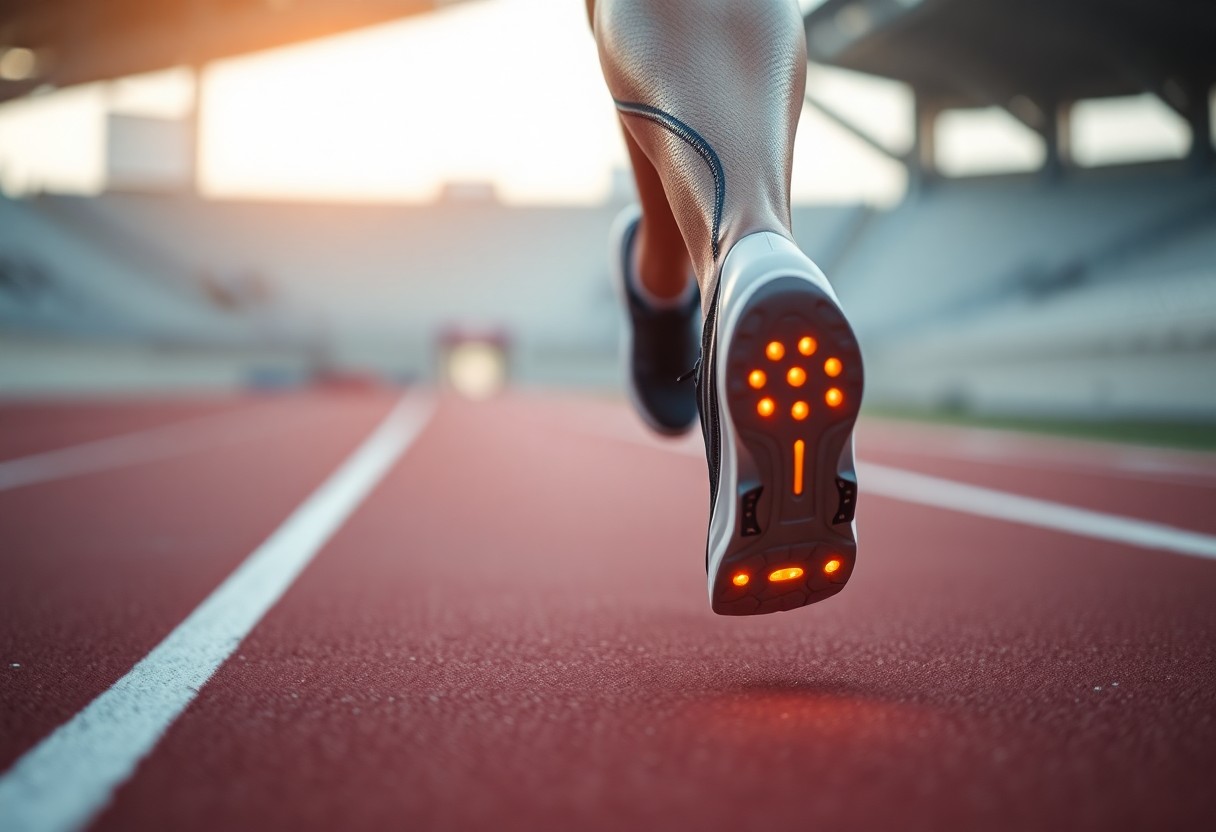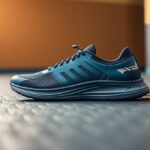
Discover the revolutionary innovations in running footwear technology that have significantly reshaped the realm of performance optimisation for endurance athletes. These advancements have been pivotal in enhancing athletic capabilities, offering runners of all levels the tools to excel.
The domain of performance optimisation in endurance running has been fundamentally transformed by advanced footwear technology, presenting unparalleled opportunities for athletes to unlock their full potential. You will learn how state-of-the-art shoe designs can substantially lower your metabolic expenditure and enhance running economy. Through the incorporation of carbon fibre plates and progressive midsole materials, these innovative shoes deliver exceptional energy return mechanisms that could decrease your oxygen consumption by as much as 4%. Whether you are a seasoned professional or a passionate amateur, grasping these biomechanical advancements will empower you to make well-informed choices regarding your running equipment, ultimately enhancing your race times.
 Continue your reading journey to delve deeper into the mechanics of running footwear that promise heightened performance:
Continue your reading journey to delve deeper into the mechanics of running footwear that promise heightened performance:
Unlocking the Science of Energy Return Mechanisms in Advanced Running Shoes
Advanced running shoe technology employs intricate biomechanical principles to optimise energy transfer during running. The innovative design elements work harmoniously to minimise metabolic expenditure, establishing a sophisticated system that enhances running efficiency through strategic material engineering and geometric configurations. By concentrating on the mechanics of energy return, these shoes furnish runners with a significant advantage in both performance and stamina, enabling them to sustain longer runs while experiencing reduced fatigue levels.
Investigating the Curvature Dynamics of Carbon Fibre Plates
Carbon fibre plates utilise precise geometric engineering to effectively redirect kinetic energy throughout the running motion. Optimal curvature angles ranging from 12° to 15° facilitate maximum energy storage and return, with advanced finite element modelling demonstrating energy return efficiencies of up to 93% in prototype designs. These meticulously engineered plates function like springs that diminish muscular effort during the toe-off phases, enabling runners to conserve energy over extended distances, resulting in enhanced endurance and overall performance.
A Comparative Analysis of TPU and EVA in Midsole Innovations
Material selection plays a crucial role in influencing shoe performance, with thermoplastic polyurethane (TPU) emerging as the superior choice in midsole technology. Comparative studies reveal TPU’s marked advantages in energy return and impact absorption, offering runners improved biomechanical efficiency across a range of running conditions. The decision between TPU and EVA foam is pivotal for athletes seeking to enhance their performance while minimising the risk of injuries during both training and competition.
| Energy Return | 18% higher in TPU |
| Oxygen Consumption Reduction | 2.4% lower with TPU |
A thorough examination of midsole materials reveals intricate performance characteristics. TPU shows superior resilience compared to traditional EVA foam, maintaining consistent mechanical properties across thousands of compression cycles. Runners benefit from greater energy return, reduced fatigue, and improved long-distance performance through cutting-edge material science innovations, which can have a profound impact on their overall training effectiveness and competition outcomes.
| Impact Absorption | TPU absorbs 37% more force |
| Rebound Elasticity | 89% maintained across 50,000 cycles |
 Continue exploring as we investigate the effects of advanced footwear technology on metabolic efficiency:
Continue exploring as we investigate the effects of advanced footwear technology on metabolic efficiency:
Evaluating Metabolic Efficiency: Identifying Who Gains Most from Advanced Footwear
Advanced footwear technology does not yield uniform benefits across all runners. Metabolic efficiency gains differ significantly among various demographic groups, influenced by factors such as gender, age, and individual biomechanics. Research has revealed intricate patterns of metabolic response, indicating that the advantages of super shoes extend beyond straightforward performance metrics to encompass complex physiological adaptations that are unique to each runner's biomechanical profile.
Investigating Gender-Specific Performance Enhancements
Female runners exhibit a 3.2% improvement in metabolic power compared to a 4.2% enhancement observed in males, suggesting the presence of sophisticated neuromuscular adaptations. Data on pelvic kinematics shows a 14% greater reduction in hip adduction angles among females utilising advanced footwear, which may elucidate the subtle distinctions in metabolic gains between genders. Recognising these variances can assist in customising training regimens and footwear selections to maximise performance advantages for each gender.
Understanding Age-Related Benefits and Their Impact on Endurance Performance
Masters athletes aged 40 and above demonstrate a 2.8% greater reduction in oxygen costs when employing super shoes, effectively compensating for diminished tendon elasticity. Analysis of tibial loading reveals a 12% cumulative stress reduction per kilometre for older runners, suggesting potential benefits in both injury prevention and performance sustainability. These insights emphasise the critical role of advanced footwear technology in prolonging the competitive lifespan of older athletes.
The age-related advantages of advanced footwear technology extend well beyond basic performance metrics. Biomechanical studies indicate that older runners exhibit more pronounced adaptations due to natural compensatory mechanisms. Reduced tendon stiffness and altered muscle recruitment patterns work in tandem with shoe technology to generate a unique performance enhancement profile. Specifically, the energy return mechanism of the carbon plate appears to counterbalance age-related biomechanical inefficiencies, potentially extending competitive running careers by alleviating the physiological constraints typically faced by older athletes.
Continue to delve deeper into the implications of advanced footwear technology on injury risks:
Evaluating the Influence of Running Footwear on Injury Risk
Advanced footwear technology introduces intricate biomechanical interactions that necessitate a detailed analysis of potential injury risks. Runners must carefully weigh the benefits of performance enhancement against physiological adaptations. Longitudinal studies reveal subtle yet significant alterations in muscular recruitment patterns, joint loading, and proprioceptive feedback when transitioning to high-performance running shoes, underscoring the necessity for a well-balanced approach to training and recovery.
Injury Analysis: The Price of Enhanced Performance
Biomechanical research indicates a 9% increase in Achilles tendon strain rates among users of super shoes during high-intensity training. Plantar pressure mapping reveals a 22% increase in forefoot loading compared to traditional trainers, particularly evident during challenging terrains such as downhill running. These findings imply that while metabolic efficiency may improve, runners need to adopt targeted strength and adaptation protocols to mitigate potential injury risks and secure long-term athletic health.
Modifying Training Protocols for Optimal Gait Adaptations
Your biomechanical response to advanced footwear necessitates strategic adjustments in your training regimen. Gait retraining becomes essential to maximise the unique energy return mechanisms of carbon-plated shoes. Runners must hone their neuromuscular patterns to align with the shoe's biomechanical design, potentially reducing the risk of injuries while maximising performance advantages.
Comprehensive gait adaptation strategies involve a multifaceted approach to effectively integrate advanced footwear technology. Biomechanical evaluations reveal that runners require approximately 6-8 weeks of progressive training to thoroughly adapt to the unique mechanical properties of super shoes. This adaptation phase includes targeted eccentric strengthening protocols, modified interval training methods, and meticulous monitoring of lower limb biomechanics. Professional athletes and serious runners can greatly benefit from routine 3D gait analyses to track subtle variations in movement patterns, ensuring optimal integration of advanced footwear technology with individual biomechanical characteristics.
 Explore the future of footwear technology and its implications for runners:
Explore the future of footwear technology and its implications for runners:
Anticipating Future Innovations in Running Footwear Technology
Innovative technologies are set to redefine running shoe design, pushing the limits of biomechanical efficiency and performance optimisation. Cutting-edge research is directed towards personalised solutions that adapt to individual biomechanics, harnessing advanced materials, computational modelling, and integrated sensor technologies to develop a new generation of intelligent footwear tailored for elite athletes.
Transforming Footwear Design with 3D Printed Midsoles
Algorithms for optimising lattice structures now enable precise regional stiffness variations that align with individual foot pressure maps. Prototype testing has demonstrated a 5.1% increase in metabolic savings compared to conventional mass-produced models, while computational design facilitates unprecedented customisation of midsole geometries to maximise energy return and minimise biomechanical stress. This innovative methodology guarantees that each runner can achieve optimal performance tailored to their distinct physical attributes.
Integrating Smart Technology for Enhanced Performance Monitoring
Emerging sensor technologies are transforming traditional running shoes into advanced performance tracking devices. Real-time feedback systems that monitor ground reaction forces can lead to a 1.9% reduction in oxygen costs through micro-adjustments in cadence, equipping runners with immediate biomechanical insights during both training and competition. Such advancements are essential for athletes striving to fine-tune their technique and overall performance metrics.
The integration of advanced sensors represents a significant leap in performance monitoring technology. Multi-axis accelerometers, pressure-sensitive matrices, and embedded microprocessors now capture intricate biomechanical data with unparalleled precision. These intelligent systems analyse gait mechanics, impact forces, and energy expenditure in real-time, providing runners with detailed insights into their movement patterns. Machine learning algorithms have the capability to predict potential injury risks, optimise training loads, and recommend personalised technique modifications based on comprehensive movement analyses, transforming running shoes from passive equipment into active tools for performance optimisation.
Lastly, gain a deeper insight into the transformative landscape of advanced footwear technology in endurance running:
Embracing the Next Generation of Advanced Footwear Technology
In summary, you have navigated through the transformative landscape of advanced footwear technology in endurance running. Your knowledge now encompasses the ways in which innovative design elements such as carbon plates and high-performance midsole materials can significantly diminish metabolic costs while enhancing running efficiency. By leveraging scientific insights, you will understand that these shoes offer more than mere incremental gains; they signify a paradigm shift in athletic performance. Your investment in this technology could lead to substantial improvements in running economy, decreased energy expenditure, and optimised biomechanical responses across a diverse range of athletic demographics.
The Article Biomechanical Efficiency of Advanced Footwear Technology: Metabolic Cost Reduction and Performance Enhancement in Endurance Running appeared first on My Shoes Finder.
The Article Biomechanical Efficiency in Advanced Footwear for Runners Was Found On https://limitsofstrategy.com







I’ve really enjoyed diving into this topic about the impact of running footwear technology on performance optimization. It’s fascinating how much science and engineering have shaped the way we approach endurance running. I remember when I first started running, and honestly, I didn’t pay much attention to my shoes beyond just how they looked. Fast forward a few years, and it’s incredible to see how tech has advanced—carbon fibre plates and cutting-edge midsole materials are now at the forefront, making a significant difference not just for elite athletes but for everyday runners like myself.
It’s really cool to hear how you’ve evolved in your approach to running footwear. I think a lot of us start off focused on the look or even just what’s in style, but then you get that lightbulb moment when you realize how much of a difference the right shoe can make.
“I’m glad to hear you’ve enjoyed exploring this topic! If you’re interested in how the latest footwear technology can enhance your running experience even further, check out this resource for insights and recommendations.”
https://greatyorkscomp.co.uk/VideoLeap
It’s great to hear that you’re enjoying the exploration of running footwear technology. It’s pretty wild to think about how far it has come in just a few years. Your journey from casual shoe choices to appreciating the science behind running gear reflects what many athletes experience.
“Glad to hear you’re enjoying the exploration of running footwear technology! If you’re curious to learn more about how these advancements can elevate your running experience, check out my latest article for deeper insights.”
https://greatyorkscomp.co.uk/VideoLeap
It’s great to hear that you’ve enjoyed exploring this topic. Your own running journey reflects a shift many of us experience—when we first lace up our shoes, it’s often more about style than function. As we dive deeper into the sport, we start to realize how essential the right gear can be.